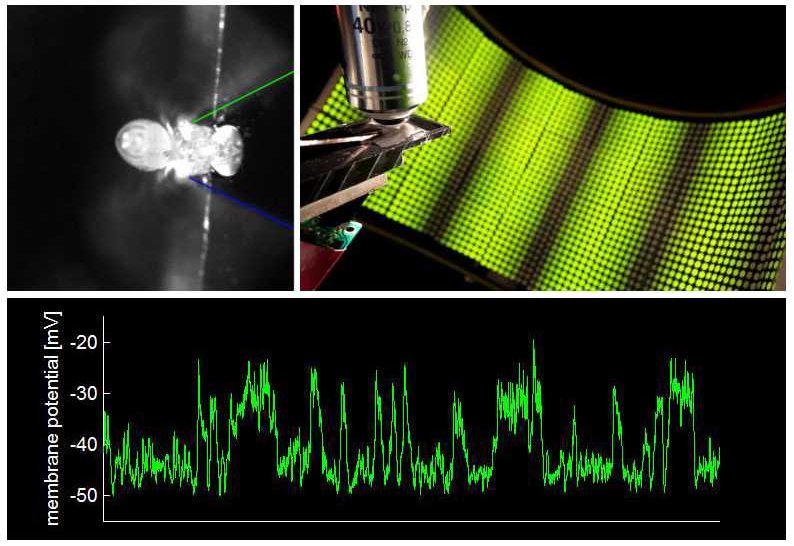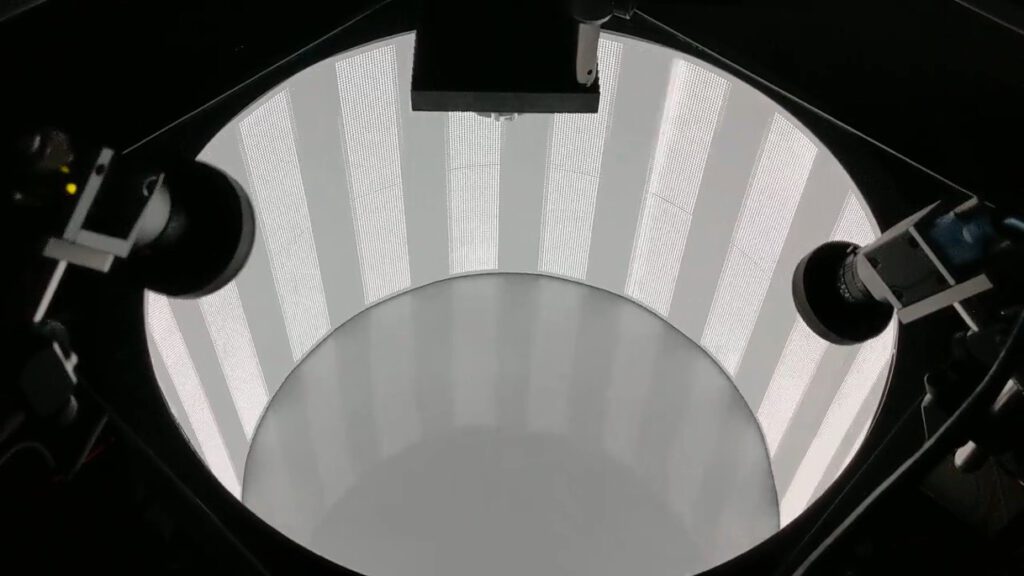Everyone who has ever tried to swat a fly will appreciate the incredibly fast and acrobatic maneuvers flies can perform. Within the fraction of a second, they can detect the motion of a hand or any other potential threat and can evade the danger by a rapid change in course. The species we study, the fruit fly Drosophila melanogaster, can perform this task with a brain that is about the size of a grain of salt.
In general, flight poses a set of unique challenges to an organism. To not get off course or fall from the sky, whenever there is a disturbance, e.g. a gush of wind, flies need elaborate and fast stabilizing reflexes. They also need to use precise enough sensory information to orient in and find their way through a complex 3-dimensional world.
We are interested in how the tiny brain of Drosophila controls such a complex behavior as course control during flight. To answer that question, we make use of recent technological advances, which allow us to measure the activity of single neurons in behaving animals. We can monitor intended steering maneuvers by tracking the motion of the wings in head-fixed flies. In addition, we use the elaborate genetic tool kit available in Drosophila to manipulate the function of specific neurons. Combining all these techniques we aim to identify and study individual neurons that control steering maneuvers during flight, the circuits they are embedded in, and the computations they perform.
We hope that this work will provide insights into general mechanisms of how neural circuits control behavior and make decisions.
Discover our homepage here.
Methods
- Whole-cell patch-clamp recordings from head-fixed flying flies
- Behavioral tracking (free flight)
- Optogenetic activation
- Confocal microscopy

Whole-cell patch-clamp recordings from head-fixed flying flies

Behavioral tracking (free flight)
5 selected publications
- Schnell B., Ros I. & Dickinson M.H. (2017) A descending neuron correlated with the rapid steering maneuvers of flying Drosophila. Current Biology 27, 1200-1205.
- Schnell B., Weir P.T., Roth E., Fairhall A.L. & Dickinson M.H. (2014) Cellular mechanisms for integral feedback in visually guided behavior. PNAS 111(15), 5700-5705.
- Schnell B., Raghu S.V., Nern A. & Borst A. (2012) Columnar cells necessary for motion responses of wide-field visual interneurons in Drosophila. J. Comp. Physiol. A. 198, 389-395.
- Eichner H., Joesch M., Schnell B., Reiff D.F. & Borst A. (2011) Internal Structure of the Fly Elementary Motion Detector. Neuron 70, 1155-1164.
- Joesch M.#, Schnell B.#, Raghu S.V., Reiff D.F. & Borst A. (2010) ON and OFF pathways in Drosophila motion vision. Nature 486, 300-304. (# equal contribution)


